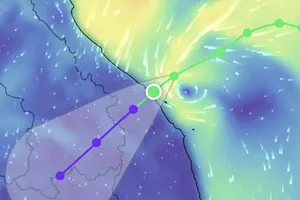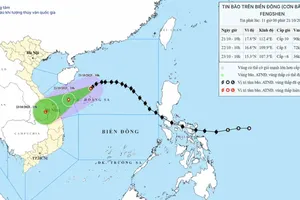
The meteorological conditions in Ho Chi Minh City from December 2 to 7 will be influenced by two synoptic systems: the southern periphery of a weakening cold high-pressure system and a northern low-pressure trough, said weather forecasters.
The low-pressure trough is anticipated to gradually migrate northward, resulting in fluctuating meteorological conditions.
As a result, the city will experience intermittent rainfall, with moderate to heavy precipitation in certain areas. The temperature range is anticipated to fluctuate between 23-25 Celcius degree and 29-33 Celcius degree.
Head Le Dinh Quyet of the Southern Hydrometeorological Station explained that the recent fog observed in Ho Chi Minh City is a common meteorological phenomenon.
Mr. Quyet indicated that as the year concludes, cold air occasionally spreads to the Southern region, resulting in decreased temperatures during the night and early morning hours. In the presence of minor disturbances in the vicinity, low-level clouds may form.
According to him, during the early morning, these clouds can obscure the sun, preventing direct sunlight from reaching the ground. This phenomenon leads to lower air temperatures, increased humidity, and gentle winds, which together contribute to the formation of fog that diminishes horizontal visibility and obscures tall buildings and architectural features.
Meteorologist Le Thi Xuan Lan said that fog develops in the presence of water vapor. Recently, Ho Chi Minh City and the Southern region, in general, have experienced sporadic unseasonal rainfall, contributing to an increase in water vapor.
Ho Chi Minh City is presently experiencing significant air pollution, characterized by a substantial presence of suspended dust particles in the atmosphere. The presence of water vapor in the atmosphere, upon encountering these particles, undergoes a process of condensation, resulting in the formation of fog.
Furthermore, the southern largest city has experienced significantly lower night temperatures in recent days.
The factors contributing to the occurrence of dense fog in Ho Chi Minh City are significant. This fog tends to diminish visibility and disrupt traffic conditions, and it serves as an indicator of severe air pollution in the city.
Fog that forms in the absence of rainfall is termed dry fog. A primary contributor to the formation of dry fog is air pollution.
























